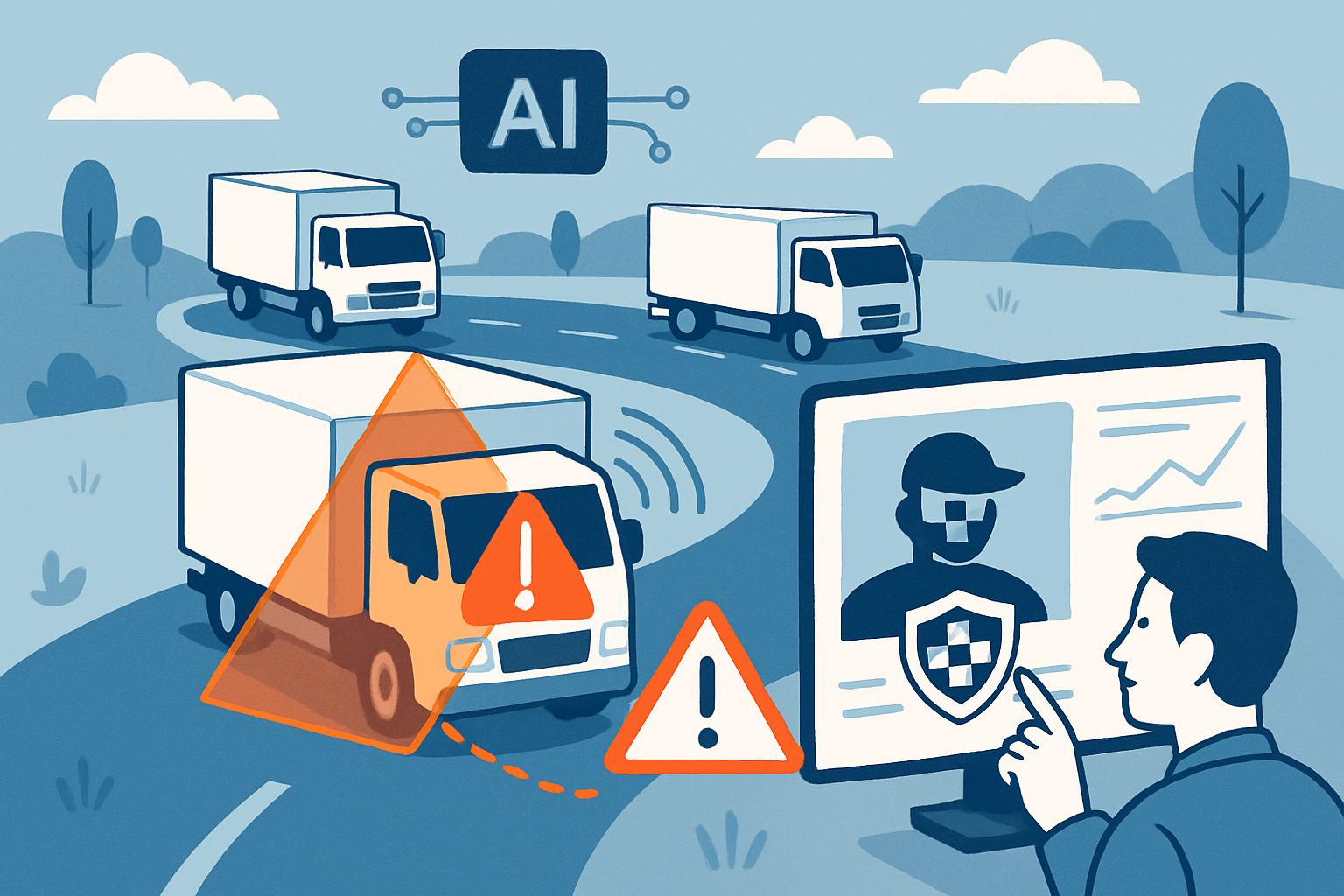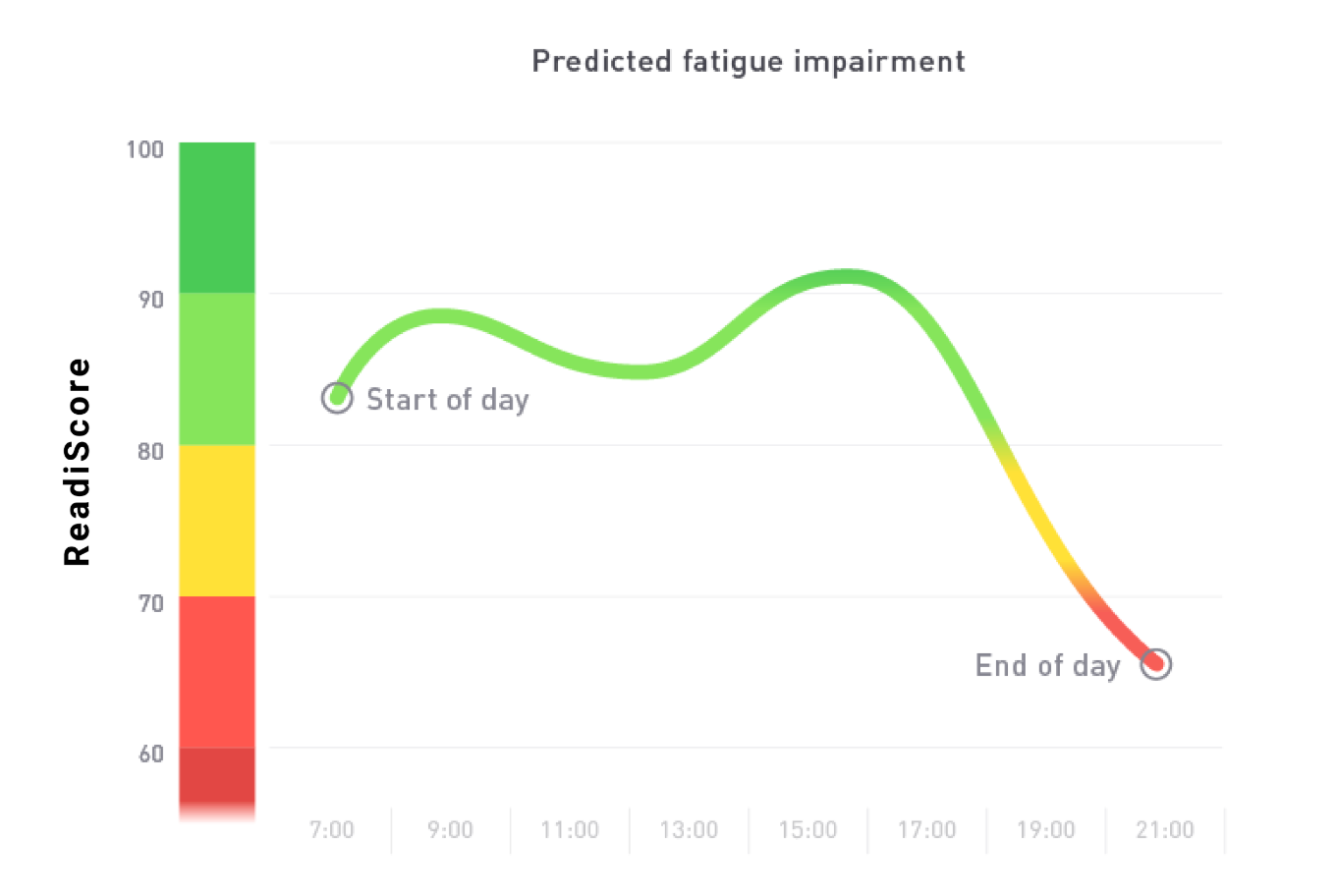AI in Mining with Fatigue Science's CEO Andrew Morden
.png?width=2240&height=1260&name=Untitled%20design%20(5).png)
AI technologies playing a crucial role in mining. AI is so much more than just “super Google,” as I like to call it. Yet, most people immediately think of natural language processing like ChatGPT when they think of AI. While this type of AI is indeed impressive, there’s an even broader landscape of AI technologies that play crucial roles in heavy industries, often with far more potential than natural language processing.
READ ANDREW'S TIPS ON GETTING STARTED WITH AI IN HEAVY INDUSTRY.
Two specific types of AI come to mind:
Machine Learning (ML)
Machine learning is a subset of AI that enables systems to learn from data and improve over time without explicit programming. In heavy industries, like mining and manufacturing, ML can analyze vast amounts of data to optimize processes, predict equipment failures, and enhance safety measures.
Machine learning is a critical feature in our fatigue risk management technology, Readi, and its power is actually quite incredible.
Robotics and Autonomous Robots
Robotics is a huge topic of conversion in heavy industry, particularly when it comes to autonomous vehicles. This subset of AI involves the design and use of robots to perform tasks, often in environments that are dangerous or inefficient for humans.
Autonomous robots can operate independently, using sensors, cameras, and AI to navigate complex environments. In heavy industries, these robots can take on tasks like site inspections, material handling, and even drilling—reducing human risk and increasing productivity. Their ability to operate 24/7 without fatigue is also a game changer.
Most Common Example of AI in Mining: Equipment Maintenance
The most common example of AI and machine learning in mining is probably equipment maintenance.
Historically, procedures would be in place where maintenance was planned ahead of time on a routine schedule.
It was hit or miss.
Sometimes, the equipment could break weeks before the maintenance was scheduled to occur, causing problems of costly downtime and repairs.
Then, an evolution occurred.
Sensors were placed on equipment, which could send equipment health data to crews, so maintenance could occur at the exact right time before issues started to occur. The inputs from the sensor data was used in conjunction with machine learning algorithms to predict exactly when maintenance should be done in advance to prevent equipment failure ahead of time.
Ultimately, this predictive maintenance allowed the lifecycle of the asset to really improve.
While it’s taken longer to see this same type of predictive analytics being used in mining safety systems, I’m seeing signs of the same evolution.
Predictive analytics are now available for human capital – to identify workforce safety risks before they occur, like fatigue, heat, and dehydration, for example.
The idea is the same – use AI in mining safety to predict when risks are most likely to occur, so you can mitigate them before workplace accidents happen.
AI in Mining: Moving Beyond Reactive Technologies
For decades, the mining industry has operated using traditional, reactive methods to manage safety and operational efficiency. These methods—while familiar and functional—are inherently flawed. In my opinion, when you're waiting for something to go wrong before you can fix it, you're already behind.
Here’s why: These reactive methods rely on responding to problems after they occur, creating a cycle of delays, inefficiencies, and increased risks.
Whether it’s reacting to equipment failures, managing fatigue after incidents, or addressing safety hazards in real time, the old way of doing things has left much to be desired, if I’m being honest.
In industries like mining, where every second counts and margins are tight, reactive systems simply fall short. They usually lag behind the pace of operations, causing costly downtime, safety risks, and operational disruptions.
In my opinion, the future lies in predictive technologies, powered by AI and machine learning.
Predictive technology doesn't just react to problems but anticipates and prevents them before they arise.
These technologies offer a proactive approach to safety and operational efficiency, shifting the focus from lagging indicators to leading ones. For example, instead of waiting for fatigue-related incidents or equipment breakdowns, AI in mining can forecast when they’re likely to happen—and provide actionable insights to prevent them altogether.
Predictive analytics is at the heart of this new way of operating. It’s not just a technological upgrade—it’s a fundamental transformation in how industries like mining manage risk, safety, and efficiency. The introduction of real-time data and AI-powered insights enables companies to make more informed decisions, optimize operations, and create safer working environments.
Here’s the difference between reactive and predictive systems:
— In traditional safety management systems, alarms go off only when something is wrong—when a driver veers off course or an operator exhibits signs of fatigue. By then, the risk is already present, and the system is simply reacting to it.
— Predictive technologies, however, allow companies to address issues before they become problems. For instance, fatigue management systems like Readi can predict when an operator is likely to become fatigued, enabling proactive measures like task rotation or adjusted break schedules.
This shift from reactive to predictive and proactive management is the future of mining safety management.
The Mining Leaders of Tomorrow
I predict the mining leaders of tomorrow will be those who embrace the transition to AI-driven processes. In maintenance. In people transportation and mineops. In risk management and safety management. Underground. In all operations where feasible.
The reality is AI and machine learning have already made their way to mine sites (and virtually all other industries). But it’s your ability to lead your organization in this new era of industrial innovation that will ultimately determine whether you become a leader or find yourself falling behind.
I caution here to say that this isn’t just about implementing new technologies, either. It’s about integrating AI into your leadership strategies from the top down.
It’s a shift in mindset.
It’s creating a culture that values data-driven decision making.
It’s ensuring your teams trust and understand the power of predictive analytics.
Championing AI in mining from the top is the only way that artificial intelligence will truly transform industries.
So, what can you do?
Give Clear Direction
Implementing AI can be complex and requires a clear vision from the leadership team. Without this, AI initiatives can lack focus, resulting in scattered efforts that fail to deliver tangible results. Leadership needs to define how AI fits into the company’s long-term strategy, focusing on specific areas like safety, productivity, or sustainability.
Cultural Shift
AI represents a fundamental shift in how companies operate.Employees need to understand that AI is there to support them, not replace them, and leadership must communicate this message clearly to avoid resistance.
Resources and Investment
Adopting AI in mining requires investment—not just in technology but in training, change management, and integration. Leaders must ensure that teams have the resources they need to implement AI effectively.
Building Trust in AI
What I often see is that the biggest barrier to AI adoption in the mining industry is often trust. AI can feel like a “black box,” and employees may be hesitant to rely on machine learning models they don’t fully understand. Leadership must champion AI adoption by demonstrating its benefits and proving its value through small-scale successes before rolling it out on a larger scale.
Without top-down vision and support, I believe that AI adoption can falter, and its full potential may never be realized.
In mining and in all heavy industries, the transition to AI-driven processes is inevitable. What’s still up for debate, though, is who the leaders of tomorrow will be.
3 Practical Applications of AI In Mining
In the high-hazard and safety-sensitive industry of mining, daily decision-making is critical. Absolutely, it starts with your ability to lead the change to AI processes. But, at the end of the day, AI needs to be used for practical purposes to make an impact. And the decisions made by supervisors directly impact safety, worker well-being, productivity, and operational efficiency.
The way I see it, predictive analytics helps them make better, data-based decisions to improve outcomes on a daily basis.
Here are 3 practical applications of AI in mining safety that come to mind:
1. Task Assignment and Rotation
Take predictive fatigue management, for example. Predictive analytics can help supervisors ensure that safety-sensitive tasks, like operating heavy machinery or working in dangerous zones, aren’t scheduled during periods when workers are most fatigued or assigned to the riskiest operators.
2. Break Allocation
Think about how much productivity could improve if supervisors weren’t allocating break times ad hoc and randomly. If they could schedule breaks for when workers really needed them – due to fatigue, heat exhaustion, or dehydration, for example – it would positively impact operations.
3. HR Staffing
AI can highlight staffing patterns and trends, like risky schedule designs, chronic understaffing, and overworked employees, which can put worker safety at risk. These insights can help HR make changes to improve worker wellbeing and scheduling overall.
I know I for one am excited about the future of AI in mining, especially when it comes to predictive analytics.
Related Posts
-
Shifting From Reactive Dash Cam Safety to a Proactive Safety StrategyDash cams are now common across trucking fleets, mine sites, and people-transport operations. They help reconstruct incidents,...
-
Top AI Trends for Fleets in 2026The trucking industry is entering a new phase of digital maturity. What began as basic telematics and compliance automation is...
-
Fatigue, Fleet Safety, and the Nuclear Verdict Era: Why Predictive Risk Management Is No Longer OptionalThe trucking industry is under legal siege. As reported by the American Transportation Research Institute (ATRI), litigation...




